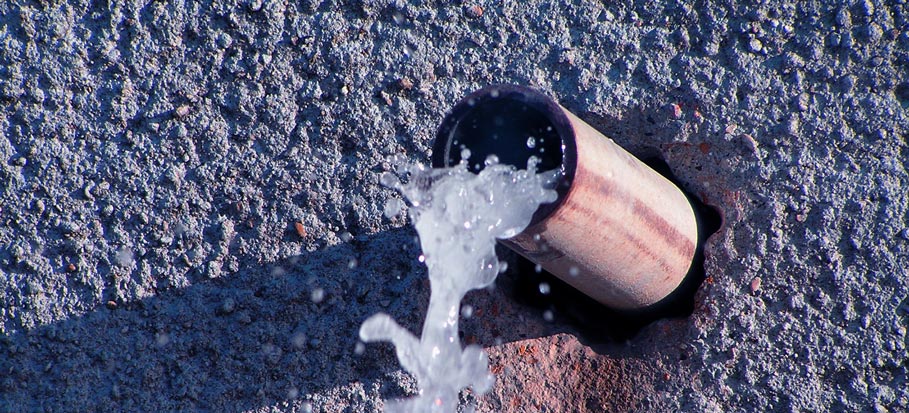Six Methods to Spot Hidden Water Line Leaks Efficiently
Six Methods to Spot Hidden Water Line Leaks Efficiently
Blog Article
Just how do you feel about Hacks to detect leaks?
.jpg)
Early detection of dripping water lines can mitigate a potential catastrophe. Some tiny water leakages might not be noticeable.
1. Examine the Water Meter
Every house has a water meter. Examining it is a surefire way that assists you uncover leakages. For starters, turn off all the water sources. Make certain no one will purge, make use of the tap, shower, run the washing device or dishwashing machine. From there, most likely to the meter and also watch if it will alter. Given that no person is using it, there should be no motions. If it relocates, that suggests a fast-moving leakage. If you detect no changes, wait an hour or two as well as inspect back once again. This indicates you might have a slow-moving leakage that can also be below ground.
2. Inspect Water Usage
Evaluate your water expenses and track your water consumption. As the one paying it, you should notice if there are any disparities. If you detect sudden changes, regardless of your intake coinciding, it indicates that you have leakages in your plumbing system. Bear in mind, your water expense ought to fall under the same array on a monthly basis. An abrupt spike in your costs shows a fast-moving leak.
A stable rise every month, also with the same behaviors, reveals you have a sluggish leakage that's likewise slowly rising. Call a plumber to completely check your building, particularly if you feel a cozy area on your flooring with piping beneath.
3. Do a Food Coloring Test
When it comes to water intake, 30% comes from toilets. If the shade in some way infiltrates your bowl throughout that time without flushing, there's a leak in between the container and dish.
4. Asses Outside Lines
Don't fail to remember to inspect your outside water lines too. Should water seep out of the link, you have a loose rubber gasket. One little leakage can waste loads of water as well as surge your water expense.
5. Assess the scenario and also evaluate
Homeowners should make it a practice to inspect under the sink counters as well as even inside closets for any kind of bad odor or mold and mildew development. These 2 warnings show a leakage so punctual interest is needed. Doing regular examinations, also bi-annually, can conserve you from a significant issue.
Examine for discolorations and damaging as a lot of pipes and also home appliances have a life expectancy. If you believe leaking water lines in your plumbing system, do not wait for it to intensify.
Early detection of dripping water lines can reduce a potential calamity. Some small water leakages may not be noticeable. Inspecting it is a proven method that helps you find leaks. One little leak can throw away lots of water and surge your water bill.
If you presume leaking water lines in your plumbing system, do not wait for it to escalate.
WARNING SIGNS OF WATER LEAKAGE BEHIND THE WALL
PERSISTENT MUSTY ODORS
As water slowly drips from a leaky pipe inside the wall, flooring and sheetrock stay damp and develop an odor similar to wet cardboard. It generates a musty smell that can help you find hidden leaks.
MOLD IN UNUSUAL AREAS
Mold usually grows in wet areas like kitchens, baths and laundry rooms. If you spot the stuff on walls or baseboards in other rooms of the house, it’s a good indicator of undetected water leaks.
STAINS THAT GROW
When mold thrives around a leaky pipe, it sometimes takes hold on the inside surface of the affected wall. A growing stain on otherwise clean sheetrock is often your sign of a hidden plumbing problem.
PEELING OR BUBBLING WALLPAPER / PAINT
This clue is easy to miss in rooms that don’t get much use. When you see wallpaper separating along seams or paint bubbling or flaking off the wall, blame sheetrock that stays wet because of an undetected leak.
BUCKLED CEILINGS AND STAINED FLOORS
If ceilings or floors in bathrooms, kitchens or laundry areas develop structural problems, don’t rule out constant damp inside the walls. Wet sheetrock can affect adjacent framing, flooring and ceilings.
https://www.servicemasterbyzaba.com/blog/how-to-detect-water-leakage-in-walls/

Hopefully you enjoyed our post on Leaking water lines. Thanks a ton for taking the time to read our blog. Sharing is nice. Helping people is fun. Thank you so much for going through it.
Show Details Report this page